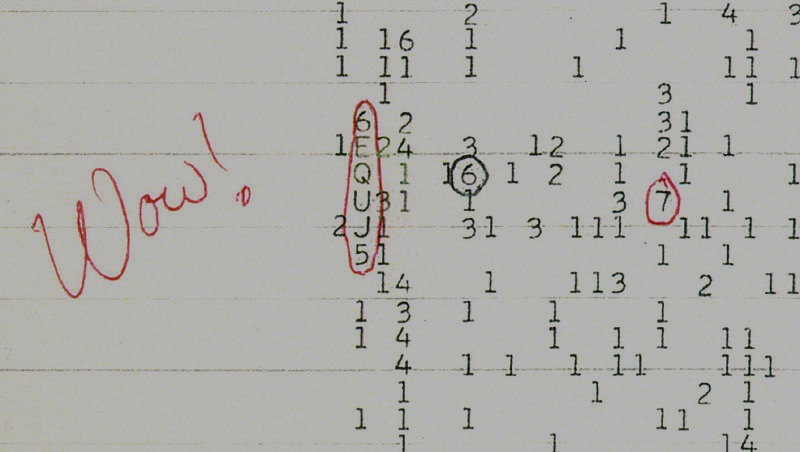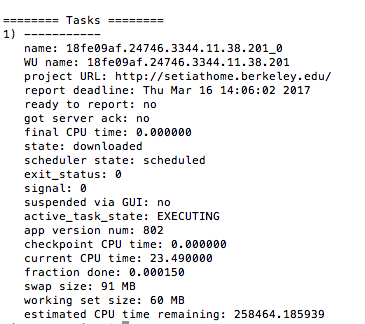This is the second project in my series Great Projects for your Spare Raspberry Pi - Serving a Community. The first project in the series, Contributing to the Global Network of Aviation Tracking - Flightrader24 - can be found here.
Disclaimer
As I always take care to note in my posts, I'm an enthusiastic amateur and my understanding of technicalities is sometimes limited. However I make up for my ignorance with a determination to get things working, and my willingness to document - in non-technical language - how I do it. This lets others follow my simple instructions and set up interesting projects.
SETI
I'd be surprised if any of this blog's regular readers hasn't heard of SETI - the Search for Extraterrestrial Intelligence - but none-the-less a bit of background is always helpful.
Wikipedia gives a fairly detailed history of our quest to locate extraterrestrials - going back as far as Nikola Tesla in 1896. Over the following century, scattered attempts were made to explore the skies, but it was only in the last 40-50 years that the effort reached significant proportions.

Until about 1980, people engaged in SETI were on the fringe; boffin-headed scientists working out of university laboratories, often regarded as eccentric and detached - more a curio than to be taken seriously. They were regularly associated with conspiracy theories about Area 51 and supposed visits by aliens to earth, with information suppressed by the US government.
As our understanding of the universe developed, and our tools for its examination became more sophisticated, most thinking people began to understand that in the great scheme of things, it's almost inconceivable that only our little Earth harbours sentient life. Throughout the years, NASA had been financing small projects here and there, while continuing to send rockets into space.
Some say that the 1997 movie, Contact brought the search for extraterrestrial intelligence into the public eye, and helped 'legitimize' something that hadn't, until then, been taken seriously by the general public.
The SETI Institute
About a decade earlier, in 1984, the SETI Institute was established. The concept was to bring together under one roof all those involved in the search for extraterrestrial intelligence, to combine personnel and resources, utilizing telescopes and computers to expand and improve their research. Today, according to their website, SETI engages over 130 scientists, educators and support staff.
Research at the Institute is anchored by three Centers: the Carl Sagan Center for the Study of Life in the Universe, the Center for Education, and the Center for Public Outreach. Nathalie Cabrol is the Director of the Carl Sagan Center, Edna DeVore leads our Center for Education, and Seth Shostak is Senior Astronomer, helming the Center for Public Outreach.
Today, the SETI Institute is taken very seriously, even prompting luminaries like Stephen Hawking in his book A Brief History of Time, to suggest that they curtail efforts to contact extraterrestrials believing that it could be catastrophic for humanity.
What is SETI doing?
Their website gives an overview of their activities - most of it beyond the scope of this post. However, one particular activity is their offshoot program SETI@home.

SETI@home is a scientific experiment, based at UC Berkeley, that uses Internet-connected computers in the Search for Extraterrestrial Intelligence (SETI).
The Wow! Signal
Through distributed computing, SETI@home is analyzing data received from huge swathes of the sky, attempting to pinpoint something that can only be explained by intelligent intervention. It's doing this by distributing its data among hundreds of thousands of computers worldwide each making its own small contribution to the over all task. Slowly and methodically each computer is sifting through its data, then reporting back to SETI.
Usually the process is carried out during free time, when the computer is not engaged in other work.
 To illustrate how exciting this can be, take a look at the illustration above. This is knows as the Wow! Signal (source Wikipedia):
To illustrate how exciting this can be, take a look at the illustration above. This is knows as the Wow! Signal (source Wikipedia):
On August 15, 1977, a strong narrowband radio signal was received by Ohio State University's Big Ear radio telescope, in the United States, then assigned to a SETI project. The signal appeared to come from the constellation Sagittarius and bore the expected hallmarks of extraterrestrial origin.
Astronomer Jerry R. Ehman discovered the anomaly a few days later, while reviewing the recorded data. He was so impressed by the result that he circled the reading on the computer printout and wrote the comment Wow! on its side, which is how the event has since been referred to.
The entire signal sequence lasted for the full 72-second window that Big Ear was able to observe it, but has not been detected since, despite several subsequent attempts by Ehman and others.
Various hypotheses on the source of the emission have been put forward. Although the possibility of a natural origin has not been completely discounted, to date the Wow! signal is generally considered the best candidate for an alien radio transmission ever received.
Raspberry Pi and SETI@home
Naturally, Raspberry Pi owners can also participate in The Search - a great use for the RasPi that's gathering dust in your drawer. Properly set up, your little Pi can hum quietly in the corner, downloading and analyzing radio telescope data supplied by SETI@home - doing its bit to search for ET.
Putting the Wow! in your Pi
To add your Pi to the SETI@home project you'll need the following:
- Raspberry Pi - any version. I run mine on a puny little RasPi Zero - which is much like trying to compute a trajectory to mars on a pocket calculator, but hey, that's what I have...
- Raspian. The client will work with many Operating Systems (including mobile phones) but this guide deals with Raspian only.
- The boinc-client software from UC Berkeley. (Berkeley Open Infrastructure for Network Computing - an open source system for volunteer and grid computing)
- An account (and key) from SETI@home.
To install the boinc-client, SSH into your Pi and from the command prompt type:
sudo apt-get update
sudo apt-get upgrade
Once your Pi has updated, type:
sudo apt-get install boinc-client
To create your account at SETI@home, visit this page and complete the registration form. (It's about five fields only so don't despair.)
At this point, things went astray for me. I received three different numbers, each of which could have been the "account key" required for the next stage. The on-site instructions weren't too clear (we're dealing with rocket scientists remember) and I had to do some detective work to discover which was the actual "account key."
To find your account key, from the command prompt in your Pi, type:
boinccmd --lookup_account http://setiathome.berkeley.edu your_email your_password
(Note, there is no punctuation before, between, or after your email address and password.)
Note your account key.
Next, in your Pi type:
boinccmd --project_attach http://setiathome.berkeley.edu account_key
(Again, no punctuation before your account key)
If, like me, you attached the wrong account key the first time around, the program won't work. You'll need to detach the project, then re-attach it with the correct key. To do this, type:
boinccmd --project http://setiathome.berkeley.edu detach
Then, once again (this time with the correct account key)
boinccmd --project_attach http://setiathome.berkeley.edu account_key
This attaches the SETI project and gives instructions to SETI@home to download data for examination to your Pi. Don't expect bells and whistles - the Pi's response is immediate and nothing appears to happen.
Give your Pi a few minutes to contact SETI, then type:
cat /var/lib/boinc-client/stdoutdae.txt
This will display your Boinc client log and show you what the Pi is doing.
By inputting the following, you'll be able to see your Pi's progress:
boinccmd --get_tasks
This should look something like this (in the screenshot mine hadn't actually done very much, but at least I could see I'm talking to headquarters!):

What's in it for you?
So, why should you spend time setting this up on your spare Pi? Unlike the previous project I described, you don't get a free $500 annual subscription to anything - so why do it?
Just imagine what would happen if your little computer collected a few megabytes of data from SETI and, at the modest speed of Pi, began its analysis...
... and one day, about a year from now, when you'd long since forgotten about it in the cupboard, it discovers AN ALIEN TRANSMISSION. In fact, it's not AN Alien Transmission, but THE Alien Transmission - the single event that could change everything we've ever known and believed!!
Imagine being the person that found the key to the greatest question ever asked.
Isn't that worth the 10 minutes it takes to set it up?
Help from readers of this blog
As I explained above, I'm not an expert. Invariably, when I link my blogs to Facebook, many people more qualified than I add comments that contribute considerably to the content.
This is my appeal to these people.
Should someone's RasPi discover a Wow! signal, will the owner be told? Should a pattern emerge from data, does it sound a ear-shattering siren at SETI headquarters causing scientists to scamper excitedly, prompting the Director to make an emergency call to POTUS?
And will anyone ever bother to tell me it was my little Pi?
I hope you enjoyed the second in the series, Great Projects for your Spare Raspberry Pi - Serving a Community. Watch this space for the next project.